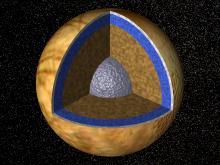There have been lots of places in the Solar System that have been proposed as being habitable for organic life. There are 8 places that are frequently suggested and five of these are moons. Large bodies of underground liquid oceans are widely thought as conceivable. Any forms of life there may have developed in the same way as species found around deep sea vents here on Earth.
Looking closer to home at the other terrestrial planets has revealed that there may be chances of smaller forms of life. Venus, for instance, may have microbes in the unwavering cloud layers 50 kilometers beyond the surface according to scientists. This speculation is backed by the observation of hospitable climates and chemical disequilibrium. Life on Mars has been a subject of discussion for a long time. Liquid water is believed to have been present on the Red Planet earlier in its history. A breakthrough happened when methane was found in the Martian atmosphere and NASA scientists are attempting to determine its biological or abiotic cause. Another important discovery occurred in July 2008 when laboratory tests on a soil sample by NASA's Phoenix Mars Lander had found water. The Mars Global Surveyor’s images display an indication of liquid flows on the cold surface of Mars that could have even been in the last decade.
In the 1960s, Carl Sagan and other astronomers figured out situations for supposed amino acid-based macroscopic life in Jupiter’s atmosphere. This was due to certain observations made of the gas giant’s atmosphere. The existence of life is questionable, though, as more research has shown that the atmosphere may not allow for the type of encapsulation that is needed for molecular biochemistry. Ganymede, the Largest moon of Jupiter, and Callisto, another one of Jupiter’s moons, are thought to have underground oceans.
Another interesting moon of Jupiter is Europa that has liquid water underneath its thick ice layer. This could again have microbes and less complex plant forms. This is based on the investigations of Earth's hydrothermal vents. Europa could also possibly contain aerobic macro fauna by means of the oxygen produced by cosmic rays that hit the ice on its surface.
The moons of Saturn are other possible candidates. Titan is Saturn’s largest moon and it is the only known moon with a significant atmosphere. The Cassini–Huygens mission discovered the first liquid lakes present outside of our planet. This mission was also important because it allowed for speculation of the presence of organisms that take in hydrogen, ethane and acetylene to produce methane.
The Cassini mission also detected geysers ejecting ice and gas on another moon of Saturn called Enceladu. Moreover, the probe identified carbon, oxygen, hydrogen and nitrogen. This is monumental because these elements are vital for life in the universe.
Although, humans have made several strides into finding out about the Solar System with the Voyager and other space probes, there is still no confirmation of life.
